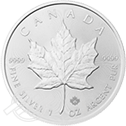Physical Gold vs. Paper Gold
Understanding the Differences Between Physical Gold and Paper Gold
Gold ownership boils down to a battle of paper gold vs. physical gold.
Both have their advantages. Both have their flaws.
What they have in common is gold—one of the oldest currencies and stores of value the world has ever seen.
This guide will help you decide what kind of gold you should own.
We will walk you through your options, explain how they work, and teach you how to acquire whichever form of gold you choose.
What Is Physical Gold?
Physical gold is tangible gold bars and gold coins that you own.
It is a physical asset—not a representation of it—that you hold in your hands.
You invest in physical gold in two ways:
- Gold IRA
- Direct delivery
Gold IRA
The Gold IRA is an individual retirement account. The account is self-directed—meaning you choose what you want to invest in and how much. Physical gold—bullion bars and coins—is allowed as an investment within an IRA.
Just like a conventional IRA, the self-directed account is available in three forms:
The Gold IRA functions just like its conventional counterpart, and the same rules apply.
To help ensure the long-term viability of your retirement account, the IRS enforces strict guidelines on the types of gold allowed. IRA-approved gold must meet or exceed the following standards:
- Bars and coins must meet a purity of 99.5%.
- Coins must be minted by governments.
- Coins must be new, uncirculated, and in perfect physical condition.
- Bars must be manufactured by approved assayers and companies that are traded publicly on exchanges such as the COMEX.
You must store your IRA metals in a neutral, guarded, and insured location, referred to as a depository.
Depositories are vaults vetted by the IRS and approved to hold custody of IRA assets.
Vaults must meet standards for security, reporting, insurance, and space.
Your gold sits safely and fully insured in the vault until you liquidate it or have it sent to you.
Direct Delivery
Direct delivery is a cash purchase of physical gold.
Direct delivery is a simple process.
You decide what you want to buy, remit payment, and the gold ships directly to your door.
There are no restrictions—outside of budget and availability—to direct-delivery gold.
After payment clears, your gold typically arrives in a week.
Once you receive your precious metals, it is your responsibility to securely store and insure your gold.
What you do with your gold, and how you do it, is entirely up to you.
Advantages of Investing in Physical Gold
Many investors turn to physical gold to anchor their portfolio.
The benefits of investing in physical gold include:
- Ownership of a tangible asset. Physical gold can’t go bankrupt or become worthless at the push of a button.
- Gold acts as a hedge against inflation and economic uncertainty. As the costs of goods and services increase, the price of gold typically rises, too.
- Gold helps preserve wealth over the long term. Since the days of ancient civilizations, it has retained its intrinsic value. It is a rare metal—there is a finite amount in existence, and it is in high demand.
Drawbacks of Investing in Physical Gold
Owning physical gold presents some challenges.
Before investing, be prepared to address the following issues:
- Gold provides no dividend or income stream.
- You must provide an adequate storage solution.
- Acquiring physical gold involves acquisition fees.
- Liquidation can take time.
You can avoid some of these drawbacks by instead opting for the Gold IRA.
Most investors find simple solutions to the other issues.
But knowing they exist will help you properly prepare and smoothly transition to gold ownership.
What Is Paper Gold?
Paper gold is a paper-traded asset that reflects the price of gold but is not physical gold.
Usually an exchange-traded fund (ETF), paper gold is traded through exchanges and has no physical counterpart.
The ETF shares don’t convert from paper to physical gold. They only reflect the price of gold.
There is no way to take possession of your paper gold shares.
Paper gold is more useful for trading purposes—moving in and out of positions—than physical gold. Investors do not typically use it as a long-term buy and hold.
Unlike physical gold—with which ownership means possession of a tangible asset—gold ETF owners are often unsure of what they’re buying.
Most gold ETFs are not fully backed with gold. Some do not require the fund to contain gold at all. Some gold ETFs are investments in mining stocks or other companies tangentially associated with physical gold.
You must read the ETF’s prospectus meticulously to understand what is truly being traded.
Advantages of Investing in Paper Gold
For the short-term investor, paper gold offers:
- Quick access to market fluctuations in the price of gold.
- Easy online trading methods.
- The ability to “own” gold without a large capital outlay.
- No worries about storage, security, and insurance of gold.
Drawbacks of Investing in Paper Gold
Paper gold exposes you to:
- Counterparty risks. With a gold ETF, you enter into a contract with a third party. That company may or may not maintain solvency. There is also a risk that your contract isn’t honored due to market conditions or other factors.
- Owning an intangible asset. You do not own real gold when you purchase paper gold shares. There is no conversion to the tangible asset.
- Volatility. ETFs expose you to trading fluctuations and market volatility. Price swings and trading volume may not be influenced by gold but by the third parties involved.
Why Choose Physical Gold Over Paper Gold as an Investment Tool?
There’s an old saying about the Golden Rule: He who owns the gold makes the rules.
The desire to own real, tangible gold is one of many reasons investors prefer physical gold vs. paper gold.
The physical gold that you can hold in your hand today is the same gold that has been a store of wealth and value since the time of ancient civilizations.
Gold is a precious metal—it is rare and has value as a commodity and as a currency.
They can’t make more gold.
Central banks around the world know this, and many hoard as much gold as they can.
There is another important factor to consider when comparing paper gold vs. physical gold.
Physical gold helps preserve wealth.
In times of high inflation, gold prices tend to rise in concert with other hard goods.
As inflation devalues currency, it takes more dollars to purchase things today than it did yesterday. Gold too costs more dollars to purchase during inflationary times, thereby preserving the dollars invested in gold.
Physical gold is universally accepted.
IRA-eligible bars and coins originate from government mints and approved manufacturers. They are among the finest in the world.
No matter where you are on planet Earth, chances are you can liquidate or trade with your physical gold.
Tips and Considerations Before Investing in Gold
Do your homework.
Take the time to research companies, methods, and ramifications of ownership before investing in gold.
As with any investment, it is best to have a well-thought plan, and stick to it. If buying direct-delivery gold, have your storage and insurance in place before receiving your investment.
If investing through an IRA, research which depository is close to you, as you may want to make an appointment and visit your metals someday.
Before liquidating, consult your certified public accountant (CPA) or tax advisor.
Have a complete understanding of capital gains and other potential tax liabilities that may come from liquidating your metals.
A reputable precious metals firm—such as Advantage Gold—can help you invest in IRA gold and direct-delivery gold.
After nearly a decade of educating and assisting clients, Advantage Gold is the highest-rated precious metals firm.
We encourage you to read some of the thousands of five-star reviews from our clients.
Exploring Other Precious Metal Investments
When comparing paper gold vs physical gold, keep in mind that there are other investment-grade precious metals worthy of attention.
All these precious metals are available as coinage—just like gold.
Silver
Silver is in high demand.
Possibly the most useful precious metal, silver has become a staple for helping products function in the modern world.
In our tech-driven age, silver’s high electrical and thermal conductivity put it front and center in the manufacturing world. Almost every piece of electronics you touch relies on silver to function.
Platinum
Platinum, one of the rarest elements, is known for its shine and luster. Many pair it with the rarest gemstones to make beautiful jewelry.
The auto industry relies on platinum for catalytic converters that help clear toxins from vehicle emissions.
The dental profession uses platinum for fillings and other dental prosthetics.
Palladium
Palladium is the most expensive of the main precious metals.
Like its cousin platinum, palladium is instrumental in converting atmospheric pollutants into less harmful vapors and carbon dioxide.
It is also used in dentistry and fuel cells.
Physical precious metals tend to be the best option for long-term investors.
Give yourself the peace of mind that comes with tangible precious metals ownership.
Call us today at Advantage Gold, or click the link and let us know how to contact you.
We will walk you through all your options and help you make the best decision for your circumstance.
Most of all, we’re happy to help.
Tags: physical gold vs paper gold


